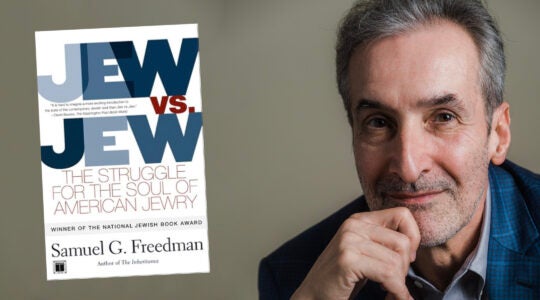The following piece contains moderately graphic details related to childbirth.
Every Shabbat, in shuls that daven nusach Ashkenaz, communities ‘kill time’ by reading the second chapter of Mishnah Shabbat. The chapter is mainly about lighting candles, but it includes the following teaching:
Women die in childbirth for three transgressions: If they are not careful with [the laws] of menstruation; and if they are not careful [to separate some] dough [when baking to give to the priest] (i.e. challah); and if they are not careful with the lighting of the [Shabbat] lamp. (Mishnah Shabbat 2:6)
When it was proposed in my shul that the practice of reciting Bameh Madlikin be eliminated, those who argued against the change suggested that removing troubling texts would be tantamount to censorship. However, simply saying the Mishnah could be construed as silent agreement.
Rather than eliminate the Mishnah, perhaps we should be grappling with its troubling implications. After all, if we read this Mishnah as a community, we should be prepared to think about what it means to suggest that women die in childbirth because of lack of care for three particular mitzvot. In that spirit, I want to share with you three stories.
After the fact they told us her cord had been wrapped around her neck – twice.
In December 2010, I went into labor expecting to have a simple, natural childbirth. I’ll spare you the details, except to say that my fetus’ heartbeat kept going up and down and none of the multi-thousand dollar machines could tell us why. The doctor was worried about the baby and decided to perform a C-section. The operation was successful and the baby was unharmed by the mysterious complication. After the fact they told us her cord had been wrapped around her neck – twice.
My second story takes us back before the birth of my first child. When I was preparing to get married, my kallah teacher had me buy the book The Secret of Jewish Femininity. She told me to skip every second chapter. The chapters alternate, the odd ones distilling the laws of Taharat Hamishpacha. I’m still a bit sorry I read the even-numbered chapters. They have nauseating stories of the sort that I now realize are inspired by our Mishnah. Woman X was careful about Taharat Hamishpacha, and it saved her life! Woman Y had a secret mikvah in Soviet Russia and drank a cup of dirty mikvah water to fool the KGB!
When the ultrasound tech saw what was in my fallopian tube, she stopped talking and said, “You need to go see the doctor.”
These stories became immediately relevant in November 2012, when my husband and I were trying to conceive our second child. The day I was supposed to go to the mikvah I started bleeding – something I would not have noticed had I not been keeping Taharat Hamishpacha. The rabbi said it was fine for me to go to the mikvah, but when I consulted my doctor she said to come in and have an ultrasound as soon as possible.
When the ultrasound tech saw what was in my fallopian tube, she stopped talking and said, “You need to go see the doctor.” The term “ectopic pregnancy” is a real misnomer. It fails to communicate the threat it poses to a woman’s life. I’m sure some people would say that I was Woman X; I kept Taharat Hamishpacha, and it led to a speedy discovery of my ectopic pregnancy! But that thought makes me uncomfortable. What about all the other women who kept Taharat Hamishpacha whose lives were not saved?
My final story is about the birth about my youngest daughter. She was a real champ, making her exit in a speedy 10 hours and 41 minutes. We had hoped to donate her cord blood, but once again we encountered a medical complication. After the delivery, I started hemorrhaging, which meant the doctor was too busy making sure I didn’t bleed out to collect the cord blood for donation.
What about all the other women who kept Taharat Hamishpacha whose lives were not saved?
I have had three pregnancies, and therefore I have three stories. Was my first birth a happy ending because I am scrupulous in challah, my second birth a happy ending because I am scrupulous about Shabbat candles, and the ectopic a – let’s call it draw – because I am scrupulous about niddah? Or was I just encountering a vastly different world, surrounded by excellent doctors in a well equipped hospital?
In logic, we teach that if a statement is true, the contrapositive must be true. For the statement, “If a woman dies in childbirth, she must not have kept laws X, Y, and Z,” the contrapositive is, “If a woman kept laws X, Y, and Z, she must not die in childbirth.” The counter-examples of women who died in childbirth despite their scrupulous adherence to halacha must number in the hundreds of thousands.
My great-grandmother, Michli Berlove, was by all accounts a fine woman, as careful about Torah Judaism as one could be in Upstate New York at the beginning of the twentieth century. Yet she died giving birth to my grandfather in 1916. Should I be cross-examining her challah?
Aren’t we silently maligning scores of deceased women when we say it?
We do not believe God’s justice and mercy to be so devoid of nuance. Is missing candles really a sin worthy of the death penalty? Does God judge a woman who missed candles once and a woman who never lit candles differently? And yet we read this Mishnah in our shuls without comment. Aren’t we silently maligning scores of deceased women when we say it?
Fifteen year old me would have said something dismissive about “those lame misogynistic rabbis” who wrote the Mishnah. Older, wiser, and slightly more compassionate as I am now, I can see them, devoted to their faith, and rocked on a regular basis by the deaths of women and children they knew to be pious and scrupulous in Torah observance. I sympathize in their desire to know why.
I can see them… rocked on a regular basis by the deaths of women and children they knew to be pious.
There are no precise statistics from the era in which the Talmud was written, but the best ones I found say that women in the 1600s and 1700s (more than a millennium later) had a 1%-1.5% chance of dying in childbirth for each birth. Over a lifetime, that compounds to about 4% per woman since most women had multiple pregnancies.
(Just as a point of reference, when I had my ectopic pregnancy, the OB who treated me said that I had a 90-95% chance that the treatment would be successful and only a 5-10% chance of having further complications. And yet, seven days later, I needed to have a major surgery to rectify internal bleeding. I am forever done saying that 5% is a small chance. Tell that to my missing fallopian tube.)
In my reproductive experiences, I encountered my own mortality.
The Talmud is grappling with a profound and unknowable world, in which we are all the sum product of our choices, affected by the choices of others, and often trapped by the time, place, or circumstances of our lives. The most devout and careful woman two hundred years ago, who took challah herself and tore bedikah cloths out of old bedsheets had a chance of death 40-100 times greater than I ever did.
In my reproductive experiences, I encountered my own mortality, and I recognize that my survival, even if partially attributable to some mitzvot I may or may not do scrupulously, was largely the doing of some incredibly talented doctors in one fantastic hospital in the twenty first century. I thank God for this, and I also thank the doctors. No one thinks it’s odd that I do both.
But reading aloud in shul is neither studying nor discussing. It is a time sink.
Ever since the members of my shul started to talk openly about the fact that we say Bameh Madlikin on Friday nights, I’ve been mulling over this issue. I recognize how difficult, complicated, and sensitive the experience of fertility is. I am also an advocate of studying and discussing challenging texts. But reading aloud in shul is neither studying nor discussing. It is a time sink.
Why can’t our shuls commit to prefacing the recitation of Bameh Madlikin with words of context? We need not recite a script every week, just regularly return to themes I’ve discussed: Why do bad things happen to good people? How can we read texts that are difficult to read? How do issues of childbearing and fertility impact people in our community?
We don’t really believe that Judaism is a vending machine. Insert mitzvah, out pops reward. Insert sin, God strikes with firebolt. We don’t really believe that every woman in history who died in childbirth wasn’t scrupulous with her mitzvah observance. Let us use this time to begin an ongoing conversation, and attempt to address what we DO believe.
Aliza Libman Baronofsky teaches at Charles E. Smith Jewish Day School in Rockville, MD. She taught Tanach and math to middle and high school students at the Maimonides School in Brookline for 11 years. Aliza is the creator of www.chumashandmath.blogspot
Posts are contributed by third parties. The opinions and facts in them are presented solely by the authors and JOFA assumes no responsibility for them.
If you’re interested in writing for JOFA’s blog contact shira@jofa.org. For more about JOFA like us on Facebook or visit our website.
The New York Jewish Week brings you the stories behind the headlines, keeping you connected to Jewish life in New York. Help sustain the reporting you trust by donating today.




